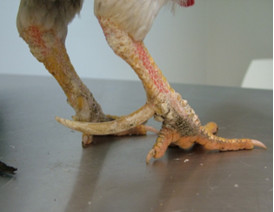Do I need to keep a rooster with my backyard hens?
Many backyard poultry flocks end up with a rooster or two. There are a few reasons this happens:
- If you buy very young chicks, it can be difficult to identify the sex – you end up buying a rooster or two instead of hens by mistake.
- It’s a common misconception that you need a rooster to encourage your hens to lay. The truth is that hens will lay eggs with or without a rooster. Without a rooster, your hens’ eggs are infertile, so won’t develop into chicks. If you do have a rooster, eggs need to be collected daily and kept in a cool place before being used so that they won’t develop into chicks.
- You want to breed chickens – this is fine, so long as you have a plan for rehoming any roosters you might hatch. Although roosters can be kept together when they are young, as they mature, they will often start fighting, which can lead to serious injuries.
So, if your sole purpose in keeping chickens is for their eggs, or you just enjoy having them, you don’t actually need a rooster!
Considerations for keeping a rooster
There are a few things you need to give some thought to before purchasing a rooster.
- They crow – loudly – every morning. This is a normal behaviour, signifying their dominance, their virility, and their ownership of territory and the flock. This crowing usually starts before dawn, but also occurs when the rooster is eating, bathing, or feels threatened. This crowing has some consequences:
- Many local councils ban the keeping of roosters because of this noise.
- Harmonious relationships between you and your neighbours may disappear.
- There is no easy way to stop a rooster crowing.
- They fight. Roosters reach sexual maturity at 4-6 months and, if housed together (even if they are siblings) they will start fighting to establish dominance in their pecking order, to claim territory, or to take over a flock. Because roosters (and some hens) grow long spurs on their legs, these fights can become serious very quickly, and can result in injury or death to one or both birds.
- They become aggressive to all intruders – even you. Defending their territory is a very real issue for roosters, and they will launch themselves at any intruders, trying to chase them away. Those long spurs can seriously hurt people.
What can I do about these issues?
Well, firstly, there is no easy way of preventing crowing.
- Devocalising roosters – surgically altering their voice box so they can’t crow loudly – is illegal. It is also painful, often ineffective, and cruel.
- Caponising – castration of a rooster – is a difficult surgical procedure as the testes are internal. Caponising is not always effective, as scraps of testicular tissue left behind during the surgery can regrow and the crowing returns.
- Hormone implants used to stop hens from laying appear to only have a short effect in roosters – a matter of only a few weeks.
- Keeping the rooster in a dark room until after the sun is risen is often unsuccessful. Researchers have found that roosters kept in consistently dim light for 24 hours a day quickly adapt to an internal schedule based on a day of 23.8 hours. They crow at the same time, their “dawn”, every morning despite the unchanging light.
- Some people place roosters in small ‘night boxes’ which light cannot penetrate and restrict the rooster’s movement, in particular his ability to fully stretch his neck. Roosters are then meant to be released from the ‘night box’ throughout the day. There are significant welfare concerns with using these boxes including limiting the rooster’s ability to move and poor ventilation. There is also no evidence to suggest that restricting the rooster’s ability to stretch their neck will prevent crowing.
- So-called ‘rooster collars’ are another alternative people try to reduce the noise made by crowing roosters. These collars fit snugly around the rooster’s neck and prevent the air sac from expanding fully, which is meant to significantly reduce the volume of the crow. However, these collars should not be used since they prevent normal behaviours and may also cause distress or breathing difficulties. Where it is considered necessary to use a rooster collar, the collar must be correctly fitted and removed immediately if there are any signs of distress. Roosters who have such collars fitted must be monitored closely for signs of distress or breathing difficulty. The collar must be removed immediately if the rooster is not adjusting to or coping with the collar.
The RSPCA opposes these practices which prevent roosters from crowing because they prevent naturally motivated behaviours leading to negative animal welfare outcomes.
Secondly, the aggression and fighting displayed by roosters is a normal behaviour, and not easily altered. The rooster’s spurs can be removed, but this is equivalent to amputating a toe, so it must only be done by a veterinarian under general anaesthesia. Removing the spur does not inhibit the fighting and aggression – it just reduces the amount of damage a rooster can inflict on his target.
So, what are my options?
- Think carefully about the reasons you want a rooster – can you just buy new hens instead of trying to breed them?
- Don’t buy day-old chicks (or fertilised eggs) if you can’t risk accidentally ending up with a rooster (as mentioned in the introduction it can be difficult to identify the sex of day-old chicks). Buy hens at point-of-lay when you know what sex of chicken you are getting.
- You may be able to surrender roosters to rescue groups or animal welfare organisations such as the RSPCA. However, these groups then need to house the rooster until he can be re-homed – and, for the same reasons you’re surrendering the rooster, new homes for these chickens aren’t easy to find.
- If you do choose to have a rooster, then it is important that you treat him like all your other chickens.

Spurs on adult roosters can be quite dangerous; removal by a veterinarian can be required.
Bibliography
Shimmura T, Yoshimura T (2013) Circadian clock determines the timing of rooster crowing. Current biology 23:231–233
RSPCA Australia believes that captive-bred wild animals should not be kept in a home environment or for companion purposes unless the species has been clearly identified as being suitable for this purpose. It is important that animals living in a home environment can live a good life. This means providing for their physical health and ensuring opportunities to fully express their individual interests and experience good welfare. Inadequate care and husbandry are reported to contribute to common and serious welfare compromises in many captive wild animals living in home environments. For more information see our policy.
The reality is, however, that captive-bred wild animals are kept in home environments despite sometimes not meeting these criteria (e.g., some reptile and bird species). Because of this, the RSPCA has produced these articles on the care and welfare of a variety of commonly kept captive-bred wild animals. The aim is to help people better understand their animals as individuals and provide them with care that keeps them healthy and provides opportunities for positive mental experiences as much as possible in captivity.
Wild animals must not be taken from the wild to be kept as companion animals (pets).
Was this article helpful?
This work is licensed under a Creative Commons Attribution-NonCommercial-NoDerivatives 4.0 International License.



